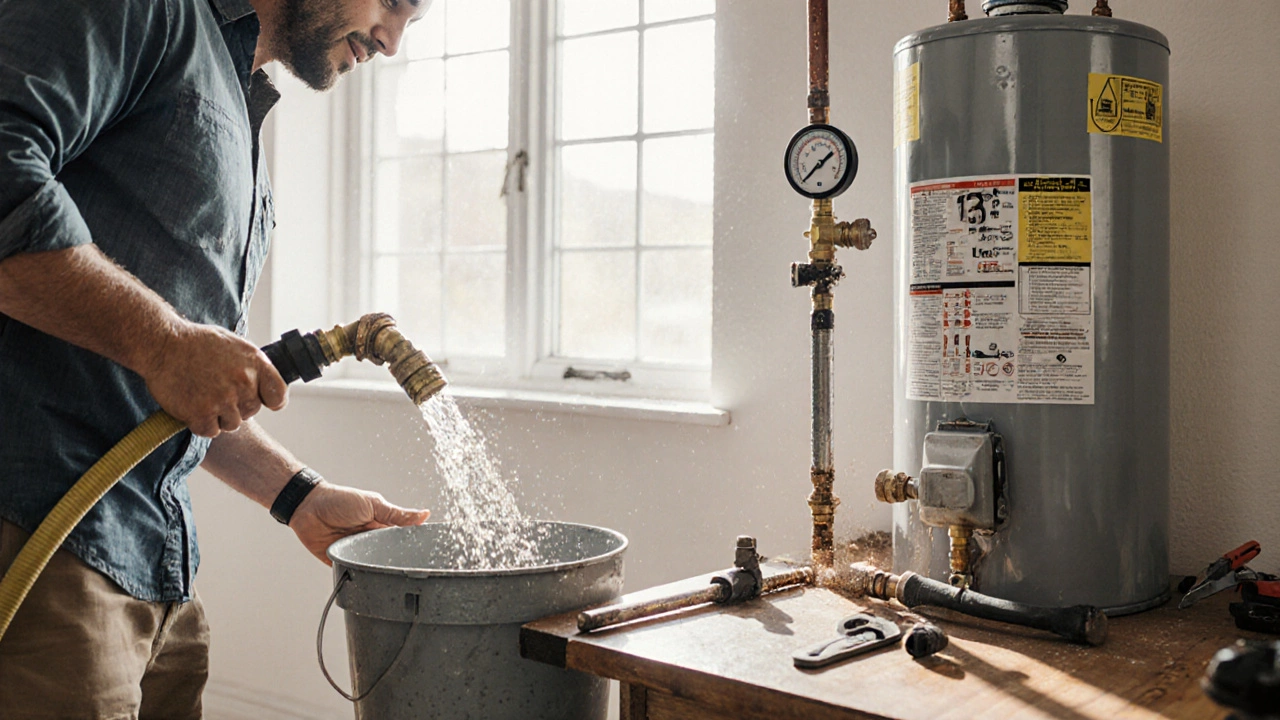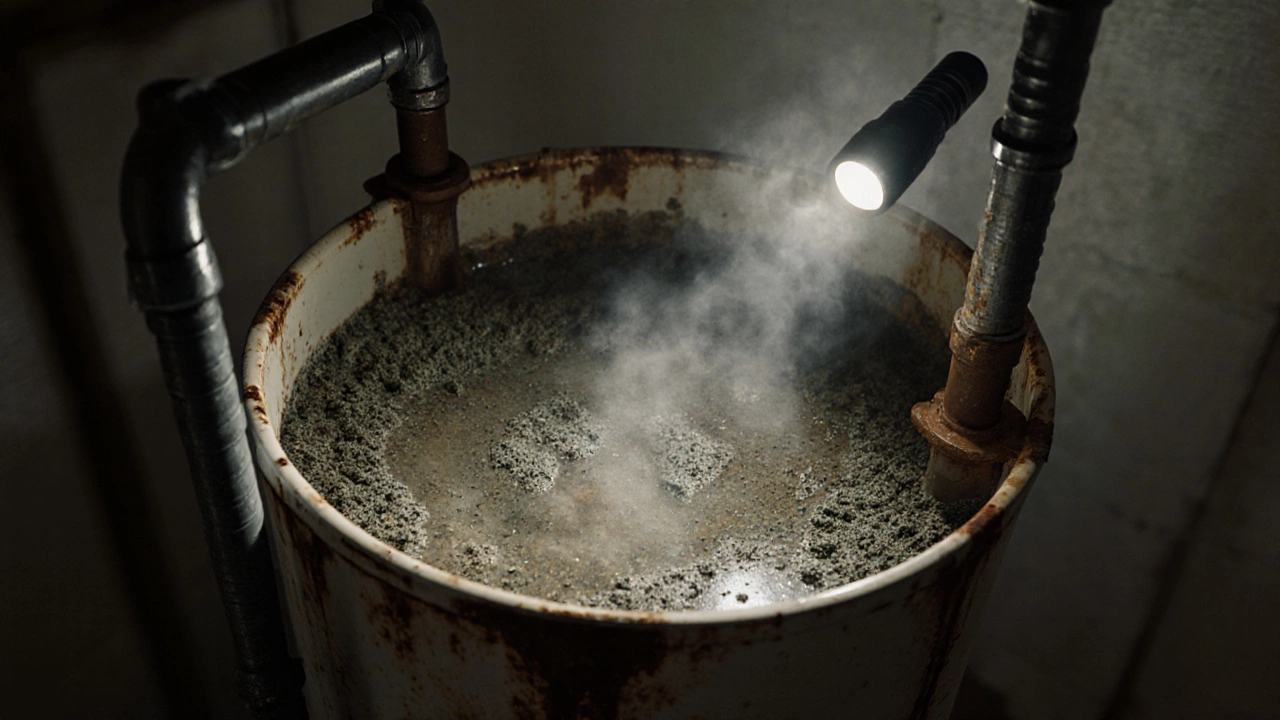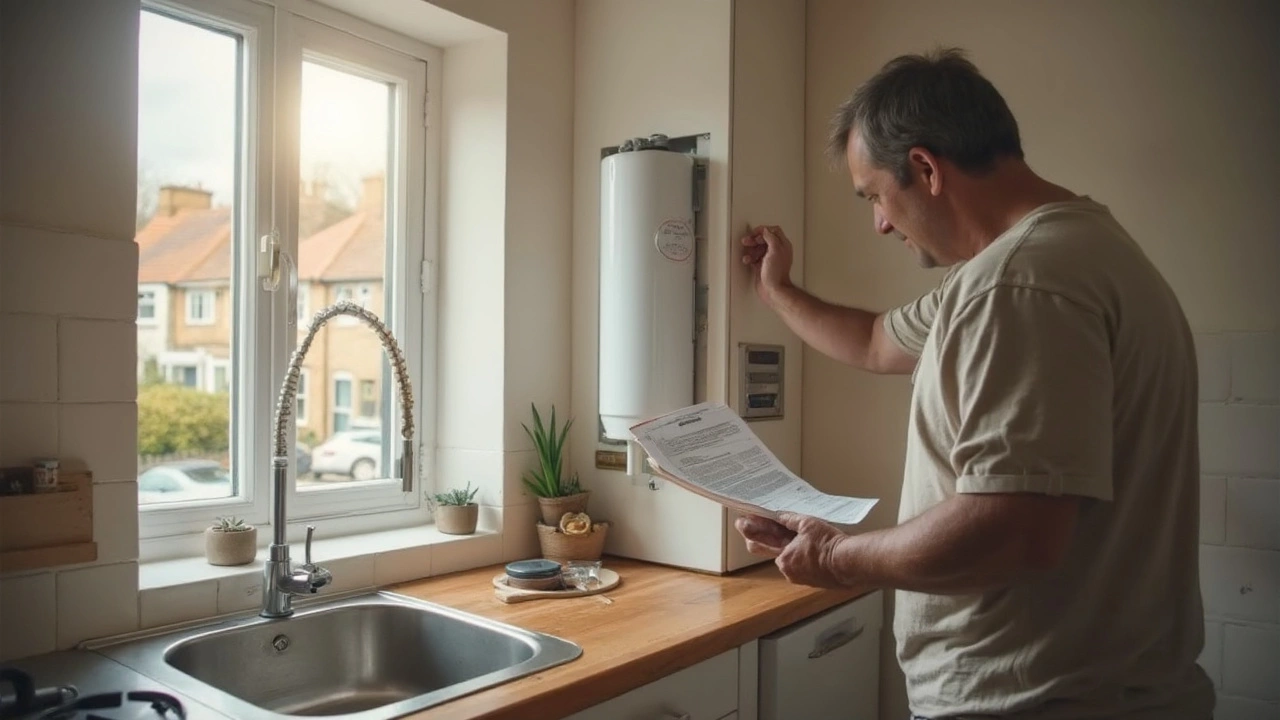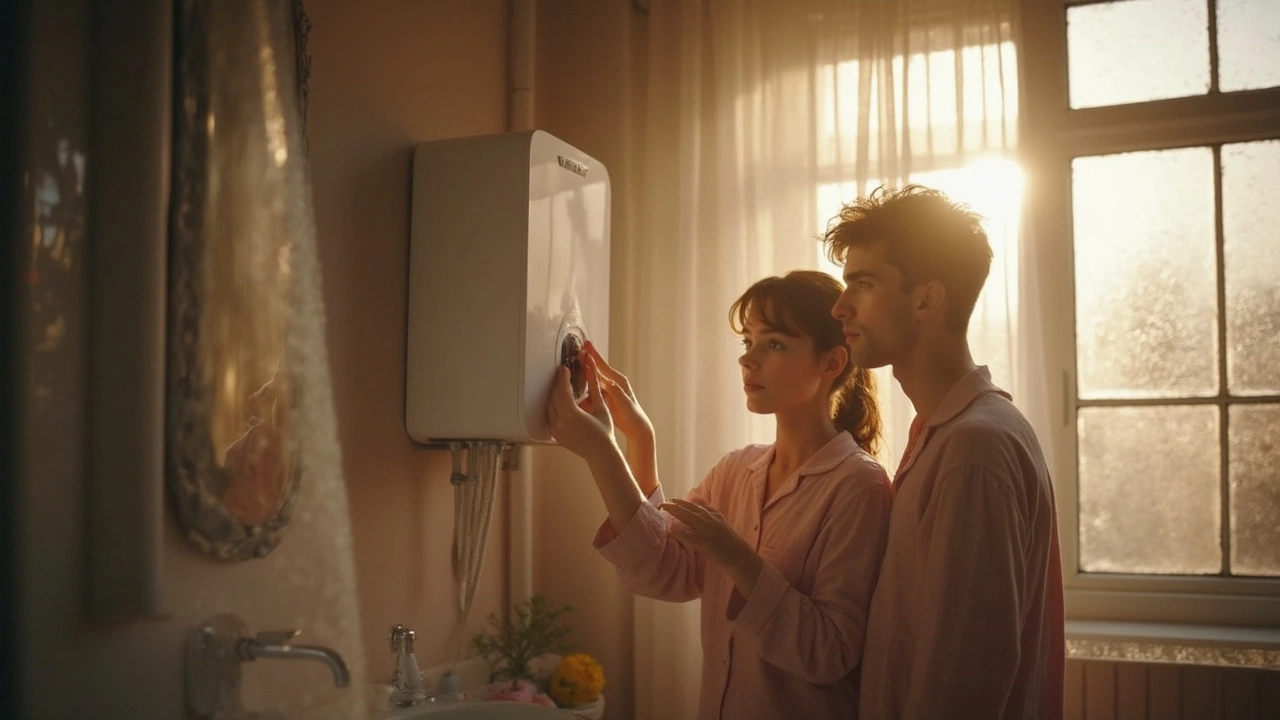Water heaters don’t last forever, but if yours dies before five years, something’s wrong. In Auckland, where hard water is common and tank sizes are often too small for modern households, water heaters fail faster than they should. Most people assume it’s just bad luck or cheap parts. But the truth is, most failures are preventable-and they follow the same patterns over and over.
Sediment Buildup Is the Silent Killer
Every time water heats up, minerals like calcium and magnesium drop out of solution and sink to the bottom of the tank. Over time, this turns into a thick layer of sediment-sometimes several inches deep. That layer doesn’t just sit there. It acts like insulation between the heating element and the water. The element has to work harder, get hotter, and burn out faster.
In Auckland’s hard water areas, a 50-gallon tank can accumulate over 20 pounds of sediment in just three years. That’s not normal wear. That’s neglect. You’ll know it’s happening if your water takes longer to heat up, you hear popping or rumbling noises, or your hot water runs out faster than it used to. The fix? Flush the tank every 6 to 12 months. It takes 30 minutes. No tools needed. Just a hose and a bucket.
The Anode Rod Is Your First Line of Defense
Inside every water heater is a magnesium or aluminum rod called the anode rod. Its job is to attract corrosive elements in the water so they eat the rod instead of the steel tank. Think of it as a sacrificial shield. But once that rod is gone, the tank starts rusting from the inside out.
Most manufacturers install a standard anode rod that lasts 3 to 5 years. But if you have soft water or a water softener, it can corrode even faster. Check it every two years. If it’s more than half eaten away, replace it. A new rod costs $40. Replacing it yourself saves you $800 in a new tank. Skip this, and your tank will rust through-usually right when you need hot water the most.
Wrong Size? You’re Asking for Trouble
Many homes in Auckland still have 30- or 40-gallon water heaters installed in the 90s. Back then, families had one shower, one dishwasher, and maybe a washing machine. Today? Two showers back-to-back, a dishwasher, a laundry load, and a kid washing their hands before breakfast. That’s too much demand for a small tank.
When the tank can’t keep up, the thermostat kicks the heater on more often. More cycles mean more stress on the elements, the thermostat, and the tank walls. That’s why you see so many 4-year-old water heaters failing-they were never meant to handle modern usage. A 50-gallon tank is the new minimum for 3-4 person households. For larger families, go for 65 gallons. Don’t buy the cheapest model just to save $200 upfront. You’ll pay for it in repairs and replacements.

High Water Pressure Is Eating Your Tank
Water pressure above 80 psi is too high for any water heater. Most tanks are rated for 80 psi max. But in many Auckland homes, pressure regulators fail or were never installed. When pressure spikes hit-like when the sprinklers turn off or the washing machine finishes-a sudden shock travels through the pipes and slams into the tank.
That’s not a big deal once. But over months and years, it causes tiny cracks in the tank lining. These cracks grow. Water leaks. Rust spreads. And then-suddenly-the tank bursts. You’ll find a puddle on the floor, and the heater is dead. Install a pressure-reducing valve if your pressure reads above 70 psi. You can buy a gauge for $15 at any hardware store. Test it once a year. It’s the cheapest insurance you’ll ever buy.
Thermostat Settings Are Too High
Most people leave their water heater set to 70°C because they think hotter water = better cleaning. But that’s not true. It’s dangerous. And it’s killing your heater.
Water at 70°C accelerates mineral buildup, speeds up corrosion, and puts extra strain on the heating elements. The Department of Energy recommends 60°C for most households. That’s hot enough to kill bacteria, safe for showers, and gentle on your tank. If you have a dishwasher without a booster heater, you might need 65°C. But anything higher is unnecessary-and costly. Lowering your setting from 70°C to 60°C can extend your heater’s life by 3 to 5 years.
Installation Mistakes Are Common-and Costly
A poorly installed water heater fails faster. I’ve seen tanks installed upside down, with no expansion tank, no shut-off valve, or with the pipes twisted so tight they stress the fittings. Even small things matter: if the tank isn’t level, one side bears more weight and cracks over time. If the drain valve is installed backward, sediment builds up faster. If the gas line isn’t properly vented, moisture collects and rusts the outer shell.
Don’t hire the cheapest installer. Look for someone who’s certified, asks about your water pressure, and offers a warranty on labor. A good installer will check your anode rod, flush the tank on the spot, and show you how to maintain it. Pay $100 extra for a pro job-it saves you $1,000 in premature replacement.
What You Can Do Right Now
You don’t need to wait for your water heater to die. Here’s what to do this week:
- Check the temperature setting. Turn it down to 60°C if it’s higher.
- Test your water pressure with a $15 gauge. If it’s over 70 psi, get a pressure-reducing valve.
- Drain a few liters from the tank’s drain valve. If the water looks muddy or gritty, it’s time for a full flush.
- Find the anode rod (usually on top of the tank). If you can’t see it, call a technician. If you can, twist it with a socket wrench. If it’s thin or crumbly, replace it.
- Look under the tank. Any rust stains? That’s a sign of internal corrosion. Time to plan for replacement.
These steps take less than two hours. They cost under $100. And they can add 5 to 10 years to your water heater’s life.
When It’s Time to Replace
Even the best-maintained water heater will die eventually. But you’ll know it’s coming. Signs your tank is near the end:
- Water is discolored (brown or rusty) from the hot tap
- You hear loud banging or popping, even after flushing
- It takes twice as long to heat water as it used to
- There’s moisture pooling under the tank
- The tank is over 8 years old and you’ve never maintained it
If you see two or more of these, start shopping for a replacement. Don’t wait for a leak. A sudden failure can flood your laundry room or basement. Choose a tank with a 10-year warranty. Look for models with a glass-lined steel tank and a replaceable anode rod. Consider a hybrid heat pump model if you’re replacing an old electric one-they use 60% less energy and last longer.
Water heaters don’t fail because they’re broken. They fail because they’re ignored. The good news? You can fix most of these problems before they cost you thousands. A little attention now saves you a lot of hassle later.
How often should I flush my water heater?
Flush your water heater every 6 to 12 months, especially in areas with hard water like Auckland. If your water is very hard (over 15 grains per gallon), do it every 6 months. If you have a water softener, you can stretch it to once a year. Flushing removes sediment that shortens the heater’s life and reduces efficiency.
Can a water softener cause my water heater to fail faster?
Yes, if you’re not replacing the anode rod regularly. Water softeners remove minerals like calcium and magnesium, which reduces sediment-but they also make the water more corrosive. This speeds up the breakdown of the anode rod. If you have a softener, check your anode rod every 18 months and replace it when it’s 50% worn. Otherwise, your tank will corrode from the inside out.
Is it worth replacing the anode rod?
Absolutely. A new anode rod costs $35 to $50. A new water heater costs $1,200 to $2,500. Replacing the rod every 3 to 5 years can double your tank’s lifespan. It’s one of the best ROI fixes in home maintenance. Most people skip it because they don’t know it exists. Don’t be one of them.
Why does my water heater make noise?
Popping or rumbling sounds are caused by sediment buildup. Water gets trapped under the sediment layer and boils. That creates steam bubbles that collapse loudly. It’s a sign your tank needs flushing. If the noise continues after flushing, the heating element may be damaged or the tank is corroded. Either way, it’s time to act-before the element burns out or the tank leaks.
Should I install a water heater expansion tank?
Yes-if you have a closed-loop plumbing system, which most modern homes do. When water heats up, it expands. Without an expansion tank, that pressure has nowhere to go. It stresses the tank, valves, and pipes, leading to leaks and premature failure. An expansion tank costs $80 to $150 and lasts 10+ years. It’s required by plumbing codes in many places and is one of the easiest ways to protect your heater.
How long should a water heater last?
A well-maintained water heater lasts 10 to 15 years. Without maintenance, it might only last 5 to 7. The biggest factors are water quality, tank size, temperature settings, and whether you flush it regularly. Tankless models can last 20+ years, but they cost more upfront and require professional servicing. For most households, a standard tank with good care is the best balance of cost and longevity.





